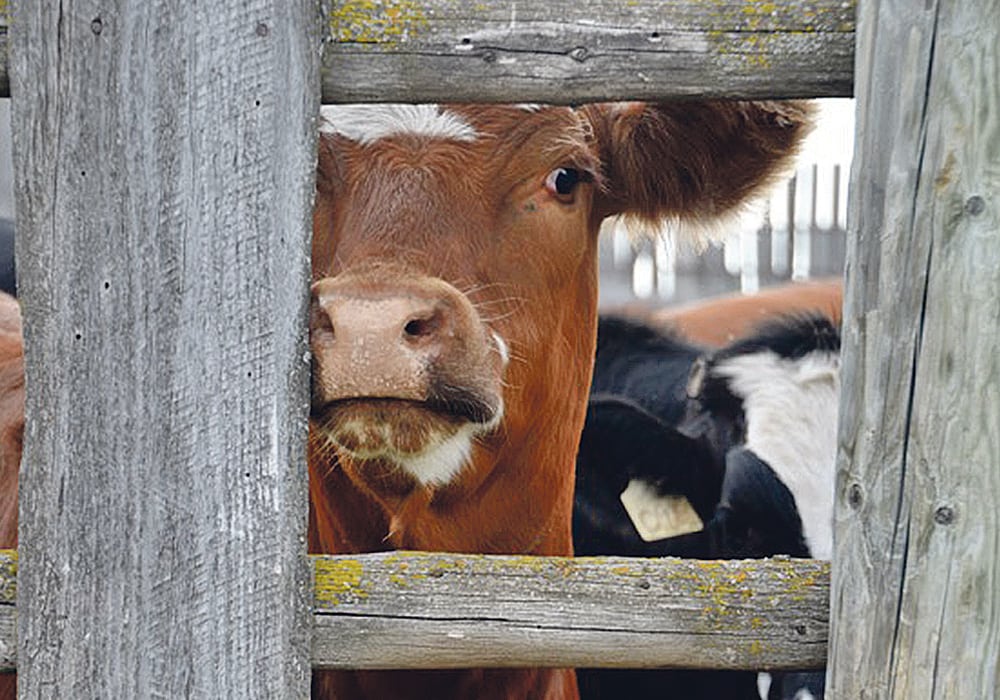Whether it is grass yearlings or cow-calf pairs and breeding bulls, management procedures can and should be implemented before releasing cattle to pasture. The result is better health or increased performance this summer.
We likely won’t get our hands on these cattle until fall so think into the future. Some have the luxury of herding cattle to summer pasture but most need to load and haul, which is a change to check each animal.
Generally cattle are worked once near time of turnout so take advantage of this. Implants, deworming and treatments for flies and other parasites can be done then for grass cattle not being retained for breeding. There are specific grass implants for yearling cattle that give good gains for most of the grazing period.
Read Also

Ostrich farm case shows power of social media
The social media circus surrounding the BC ostrich farm, could happen again in Canada, says communication expert
Calf implants are often given at spring processing and some are safe to give heifers even if intended for breeding. We all know not to implant intact bull calves.
In most of Western Canada implants will last three to four months so they cover the grazing period nicely. Cattle are then often ready for re-implant in fall.
Flies and mosquitoes are more of a problem in midsummer. There are pour-on products for flies and some are available in minerals. As well, products can be put in cattle oilers for continual treatment at certain times of the year.
Use canola oil or mineral oil in the oilers, as opposed to diesel fuel. I’ve always wondered about the withdrawal time for diesel and we do want to minimize environmental concerns.
There are also reliable fly tags that have a longer life but remember that with all these chemical compounds we need to use them at the right time. Overuse results in development of resistance. If pour-on products are applied, do it just as cattle go out to pasture to get the maximum benefit.
With internal worms, cattle will look fine even with a worm burden. Fecal tests through the local veterinary clinic, especially toward midsummer, may give you an answer. If cattle have been diagnosed with worms in years past, the pastures are carrying a worm burden and cattle can pick up parasites as grazing begins.
We are seeing more resistance to ivermectin products. Some products can be easily mixed into minerals provided at midsummer or a double release injectable dewormer can be given.
I recommend the mineral approach. In really large pastures where you don’t see the cattle, or where mineral consumption is erratic, use the injectable double release product. Efficacy, cost, ease of administration and timing must be considered, as well as environmental effects on useful things like the dung beetle.
Some areas of Canada and especially Alberta and Saskatchewan have pockets of lungworms. The same products used midsummer for internal worms should look after lungworms. They are harder to diagnose and many infections have been found upon autopsy.
As for infectious diseases, all stock including bulls should have their clostridial vaccinations up to date. Soil-borne diseases such as blackleg, malignant edema and redwater can cause high losses in unprotected cattle.
Double check the clostridial vaccine to make sure it has redwater “clostridium hemolyticum” if you need that coverage. We see redwater often along the eastern slopes of the Rockies in Alberta and areas of Manitoba where liver flukes are problematic.
It is best to vaccinate close to pasture turnout and that goes for anthrax as well. Anthrax vaccine is only recommended if the disease has been diagnosed in the area.
Calves should also get vaccines for respiratory pathogens including histophilus. Cows and heifers need vaccines for reproductive pathogens such as IBR and BVD. Your local veterinarian can advise on the best protocols.
Before turnout, check the fences and check for poisonous weeds, and do that before the grass really gets going. If there are junk piles or old vehicle bodies in the pasture, ensure there are no batteries, which are still the most common cause of lead poisoning.
Before the final move-out date, have a good look at the cattle to see if some should be held back. Bad footed cattle are prone to lameness. Cows thinner than their herd mates may have some underlying problem.
If you find fatalities this summer on pasture and they are fresh, get an autopsy done as quickly as possible. Veterinarians can diagnose most common pasture deaths with a gross necropsy. You definitely want to know whether it’s an individual case or the start of something infectious or contagious.
If a cow dies, get a BSE test. It pays for the autopsy, which is beneficial, and you get a small stipend.
As for lame cattle, check them out. Many causes of lameness require things other than antibiotics. If you do treat, remember withdrawal times. Record treatments to look for trends or repeat offenders.
Supply summer minerals to all age groups. Skimping will lead to poorer fertility, more sickness and possibly deficiencies in fall. Some producers use drones to increase efficiency in checking cattle and they are a fun way to do it. They also make it easier to check fences.















